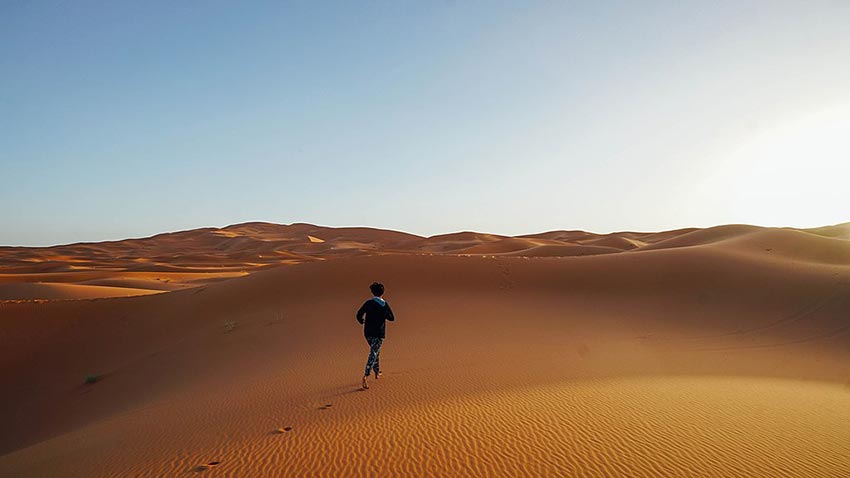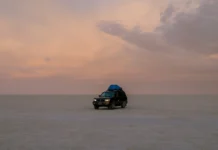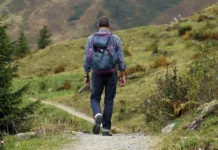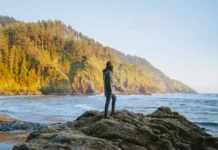Table of contents
Introduction
The concern of “what’s wrong with camping on the Sahara desert” has driven you away from your dream of taking an adventure to this amazing land. The worry is reasonable, given that the location is a magnificent destination of numerous extraordinary events.
It is not an unexplored place, so there’s plenty of information from professional experts available out there to assist you in making your decisions.
What Can Be A Problem To Camp At The Sahara Desert
There’s nothing wrong with camping at the Sahara, but make sure you have a plan. You don’t want to travel blindly on one of the most unexpected journeys. Because there is no turning back, and if you were not planning carefully, it might end up very bad for you!

Unfavorable weather
The first thing you need to take note of is its extreme weather condition. Every year, this place has witnessed approximately 50 centimeters of rainfall.
The climate here is really dry and scorching in the mornings, up to 58 degrees Celsius. On the contrary, at night, the temperature might dramatically descend to minus 6 degrees Celsius.
If you have not ever been prepared for such a sudden temperature change, your body might suffer from hyperthermia and even heat stroke. For unfortunate cases, shivers, nausea, difficulty speaking, and even illusions are clear signs of heatstroke.

Lack of clean water
Another thing to keep in mind is the availability of clean water. Most of it here is saltwater. A few spots called oases are the only place where you can find fresh water.
Freshwater is crucial for the body’s functioning and helps you stay conscious. You will need to drink a lot to refresh due to the exceptionally high temperature. As a result, learning how to preserve fresh water and keep your body hydrated is essential for all adventurers.
Dust storm
The appearance of the sandstorm may be unfamiliar to those who lived far away from the desert. Nonetheless, it happens regularly here in these areas.
Unfortunately, it is difficult to predict an escape route for this type of catastrophe – even experienced local guides are unsure of where and when it will occur.
The sandstorm can be a bad dream come true for adventurers as it can bury its victims in unescapable sinking sand, who end up losing their breath. Another scenario is that this type of natural disaster can carry travelers away by a massive cyclone and get them lost in a vast dune.
Disorientation
So, if you don’t have enough information about where you’re about to go, the best is never going there. A lack of research and travel background can lead to various issues, one of them being lost.

Assume you’re walking through a massive sand field with no water or food, feeling frustrated and desperate. This horrible circumstance can be a test of your physical stamina, also a trial of your spirits.
In these situations, travelers who have been wandering for an extended period and are badly dehydrated report signs of paranoia. An example is that people may picture an oasis in front of them, which never exists.
Recommendation For Campers
Conduct some comprehensive reading
Before taking a trip to the mysterious land, learn as much as possible about it. If you happen to get lost, a few tips in the pocket about the weather, plants, or even wildlife can help you survive.
Some cactus species, for instance, contain drinkable fluid, although a few varieties of them may contain deadly poison.

Carefully pack your bag!
Make sure you pack a solid map, a GPS device, or a cell phone! Whenever you decide to travel alone, don’t forget to share your scheduled plan with your friends and family about where to find you.
It would be best if you packed yourself with a large brim hat, sunscreen with high SPF, and a pair of UV-filtering sunglasses to protect you from the hideous sunray.
Synthetic fibers are recommended about what to wear, but some prefer cotton since it absorbs and keeps you cool from heated days.
Drink enough water
To avoid getting dehydration, breathe through your nose and avoid greasy foods, which dehydrate you much faster. Drinking as much as possible is the most effective solution to avoid dehydration and heatstroke.
Regardless of your experience, it is always a good idea to pack as much as possible.
Frequently Asked Questions
What Is The Highest Temperature Of The Sahara Desert?
This world’s hottest desert has an average of 30 degrees Celsius annually, with the highest record being 58 Celsius. The place receives very few rainfalls. Half of it gets less than one inch of rain per year.
Although this location has a consistently burning hot environment, the temperature can drop significantly to minus 6 Celsius at night. Moreover, you can see snow falls on many mountain ranges afar, but it never happens in this area.
How Large Is The Sahara Desert?
The Sahara is the world’s largest hot desert and the third largest, after Antarctica and the Arctic. It covers an astonishing range of 9.2 million km2, which is about the size of China and accounts for 8% of the total land area on the planet.
Activities Of The Sahara
Quad biking, stargazing, sand surfing, and camping are the activities available in this sandy land. There is also a four-day journey to the top of Chegaga Dunes. There will be a spectacular sunrise, sleep under a sky full of stars, and make lifetime memories.
Is It Possible To Inhabit In The Sahara?
Only two million people are living here in the desert. Most of them are migrants, who move from place to place according to the seasons. Others live in permanent settlements around water supplies.
Conclusion
We hope our post has cleared up any confusion surrounding “what’s wrong with camping on the Sahara desert”. Although it is not a pleasant place to visit, it may offer you a priceless experience.
Thank you for reading to the end. Good luck with your travels!
Last Updated on 2 years by FT2L Team









